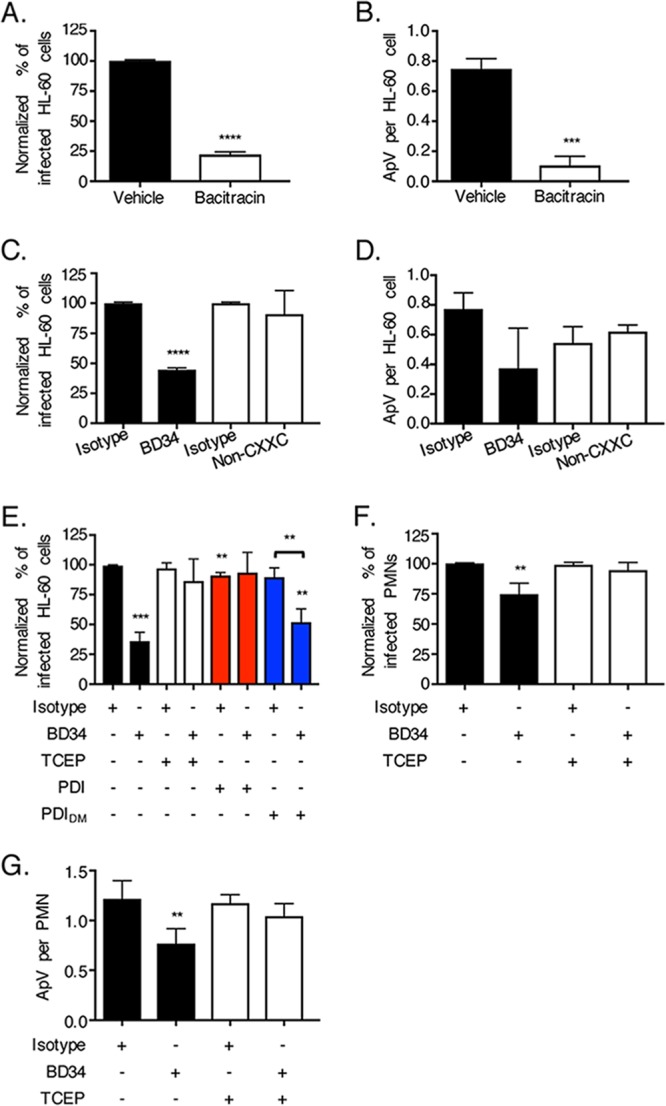FIG 3.

Cell surface PDI reductase activity is important for A. phagocytophilum infection. (A to D) A. phagocytophilum requires PDI enzymatic activity to optimally invade host cells. HL-60 cells were incubated with A. phagocytophilum organisms in the presence of bacitracin or vehicle control (A and B) or antibody BD34, noncatalytically neutralizing PDI antibody (Non-CXXC), or the appropriate isotype control (C and D). At 24 h, the cells were examined by immunofluorescence microscopy for the percentages of infected cells (A and C) and numbers of ApVs per cell (B and D). (E to G) BD34-mediated inhibition of A. phagocytophilum infection is nullified in the presence of recombinant PDI or TCEP. HL-60 cells (E) or neutrophils (polymorphonuclear leukocytes [PMNs]) (F and G) that had been treated with BD34 or isotype control were incubated with A. phagocytophilum in the presence of PDI, PDIDM, or TCEP for 30 min, followed by PBS washing. At 24 h, the cells were examined by immunofluorescence microscopy for the percentages of infected cells (E and F) and numbers of ApVs per cell (G). All data are presented as the mean values ± SD from triplicate samples and are representative of experiments performed a minimum of three times. Statistically significant values are indicated. **, P < 0.01; ***, P < 0.001; ****, P < 0.0001. (E) Asterisks above columns indicate statistically significant differences in infection relative to the results for untreated cells, while asterisks over the horizontal bracket denote a statistically significant difference between the levels of infection of BD43- versus isotype control-treated cells following incubation with PDIDM.
